Secondary school learning situation analyzed with the Equality Web
Secondary school learning situation analysed with the Equality Web
In this activity, a teacher led a programming workshop for lower secondary students (around age 13–14), introducing them to basic coding through the creation of a simple video game using Scratch. Students chose between two game settings: a fantasy world (dragons, knights, magic) or a sci-fi universe (aliens, robots, space). The goal was to tap into familiar cultural references to make coding more engaging.

The teacher considered the activity a success: students were motivated, most completed their games, and the final presentations showed creativity and technical learning. However, beneath this apparent success, gendered patterns emerged. Boys enthusiastically embraced the fantasy and sci-fi themes, drawing on gaming references like Zelda, Minecraft, or Halo. In contrast, several girls expressed little interest in the proposed settings. During group work—mostly in same-gender pairs—girls often focused on design and aesthetics, while boys took charge of coding. In the final presentations, boys led most of the technically advanced projects.
Although students appeared to choose their tasks freely, these choices reflected prior gendered socialization:
- The fantasy and sci-fi themes aligned more with male-coded geek culture, which some students found unfamiliar or unappealing—not due to a lack of interest in coding, but a disconnect with the proposed universe.
- Boys dominated the programming and leadership roles, while girls were subtly relegated to supporting, less visible tasks.
- Girls’ limited speaking time during presentations and their tendency to work apart from boys pointed more to exclusion than true autonomy.
Applying the Equality Web, the activity failed to:
- Foster an atmosphere that encourages learning
- Install cooperation
- Make girls visible in a stereotypically masculine domain
- Valuing girls' experience
- Encouraging girls to speak out
- Giving power over knowledge
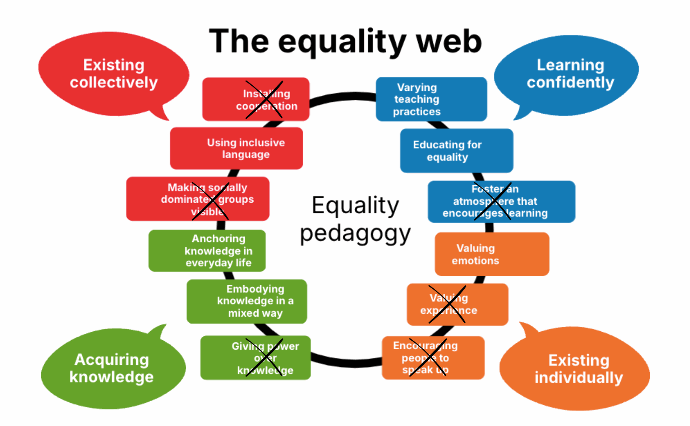
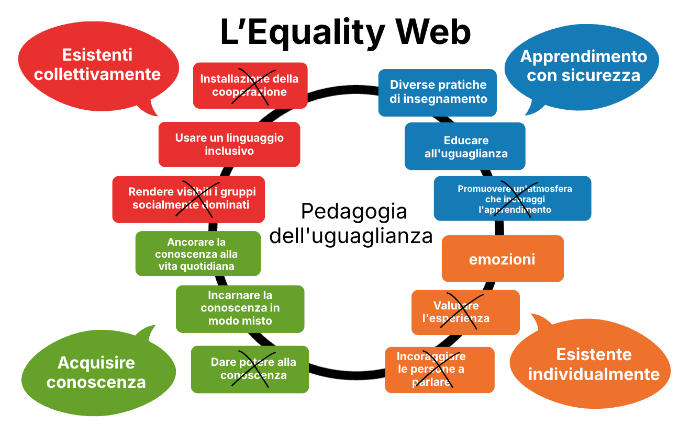
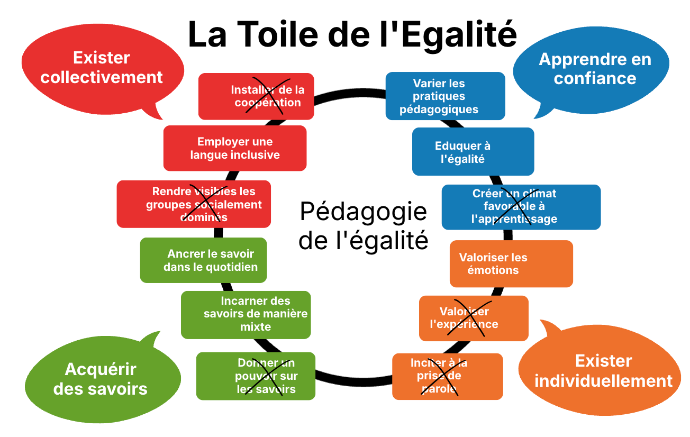
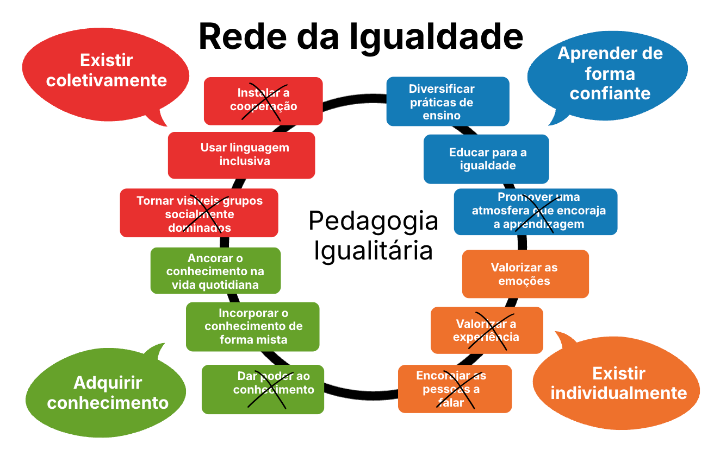
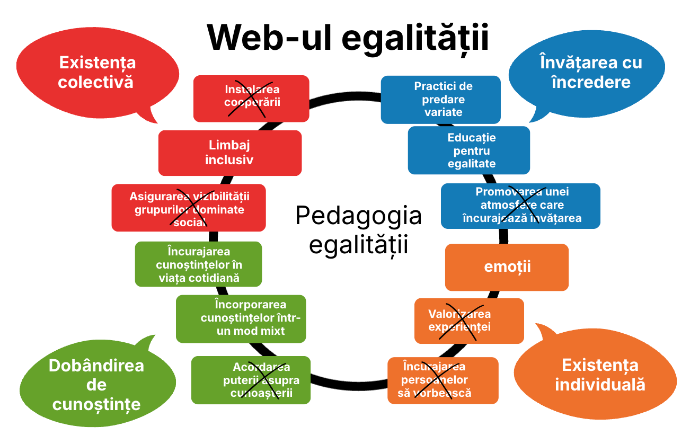
In short, the teacher focused on the successful acquisition of programming skills and student engagement, but did not consider the underlying social dynamics that shaped how students engaged with the content. The unequal distribution of tasks and confidence went unchallenged, and the activity ended up reproducing gender inequalities despite its inclusive intentions. Obviously, the teacher did not intentionally create these disparities—they stemmed from unconscious biases and assumptions about what is “fun” or “neutral.” The equality web helps to shed light on unconscious biases and encourage critical reflection on teaching practices.
How to make this activity more inclusive?
Fostering an atmosphere that encourages learning
- Diversify cultural references: instead of assuming fantasy or sci-fi will appeal to everyone, offer a wider range of themes (e.g. everyday life, environmental missions, mystery, humor, or sports). Start from students' interests and connect coding to real life. Better yet, allow students to co-create the universe of their game.
- Make the implicit explicit: acknowledge upfront that some students may be more familiar with gaming than others, and reassure everyone that no prior knowledge is needed.
Installing cooperation
- Encourage mixed-gender collaboration by intentionally forming diverse groups and rotating roles (coding, design, storytelling, etc.) so that each student engages with all aspects of the project. However, take care not to isolate a single girl in an otherwise all-male group. If it’s not possible to ensure a minimum of 30% girls in a group, it may be more supportive to let girls work together rather than placing them in a mixed group where they risk marginalization.
- Foster a cooperative rather than competitive environment.
Making everyone visible
- Value all types of contributions: explicitly recognize the importance of design, narrative, and coding equally in the success of the game. Celebrate diverse talents.
- Be attentive during group work: intervene gently if one student dominates or another is sidelined.
- Ensure equal space during presentations: require that all members of each team speak during the final presentation. Train students to present together.
Giving power over knowledge
- Let students co-create the game world and use coding as a means of expressing their ideas, stories, or values, turning them into authors rather than mere users.
- Encourage students to reflect on their learning process and self-assess their participation, choices, and progress. Offer them real agency by letting them choose how to present their work, define success, support peers, and help shape class norms.
- Give students the opportunity to mentor or support others (peer-to-peer help, feedback sessions).
Can you think of other ways we could make this activity even more inclusive for everyone?
There are no comments for now.
